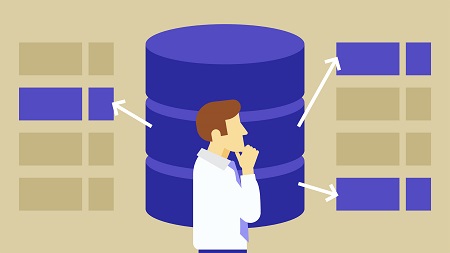English | MP4 | AVC 1280×720 | AAC 48KHz 2ch | 2h 43m | 251 MB
Have you ever opened up a database that someone else built and felt a little lost? Or ever thought of designing your own simple database and been unsure of where to start? Or perhaps you need to work with a team of database professionals and don’t know how to speak their language? This course can help you overcome these hurdles.
Adam Wilbert covers the basics of relational database design, regardless of whether you use Access, FileMaker, Open Office, or SQL Server. Learn how to prevent data anomalies, gather requirements to plan your design, and develop a conceptual data model—translating your ideas into components like tables, relationships, queries, and views. Plus, learn about logical design considerations that can help you construct a database that is easy to maintain.
Topics include:
- What is a database management system (DBMS)?
- Moving through the database development cycle
- Preventing duplicate, inconsistent, and conflicting data entries
- Gathering requirements
- Developing relationships
- Identifying key fields
- Following a naming convention
- Developing the actual database
Table of Contents
1 Welcome
2 What you should know
3 Exercise files
4 Database management systems (DBMS)
5 Relational structures
6 Get to know your RDBMS options
7 The database development lifecycle
8 Relational database advantages
9 Remove duplicate information
10 Eliminate inconsistent data
11 Break data down into its components
12 Prevent data conflicts
13 Require complete information
14 Maintain a consistent structure
15 Understand the goal
16 Review the current system
17 Discover actors and tasks
18 Interview the client
19 Work with historical values
20 Identify exceptions and irregularities
21 Understand entities and tables
22 Develop relationships
23 Develop subtypes and supertypes
24 Utilize lookup tables
25 Draft the initial data model
26 Identify key fields
27 First normal form
28 Second normal form
29 Third normal form
30 Denormalization
31 Follow a naming convention
32 Data types and precision
33 Create junction tables
34 Apply integrity constraints
35 Enforce referential integrity
36 Build indexes
37 Move from planning to construction
38 Create the tables in Access
39 Establish relationships in Access
40 Write queries in Access
41 Create the tables in SQL Server
42 Establish relationships in SQL Server
43 Create views in SQL Server
44 Implement the plan
45 Next steps
Resolve the captcha to access the links!
